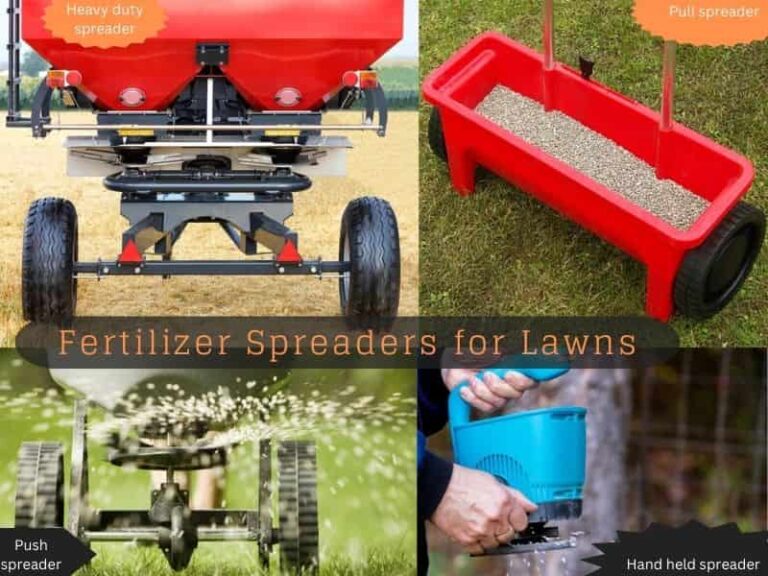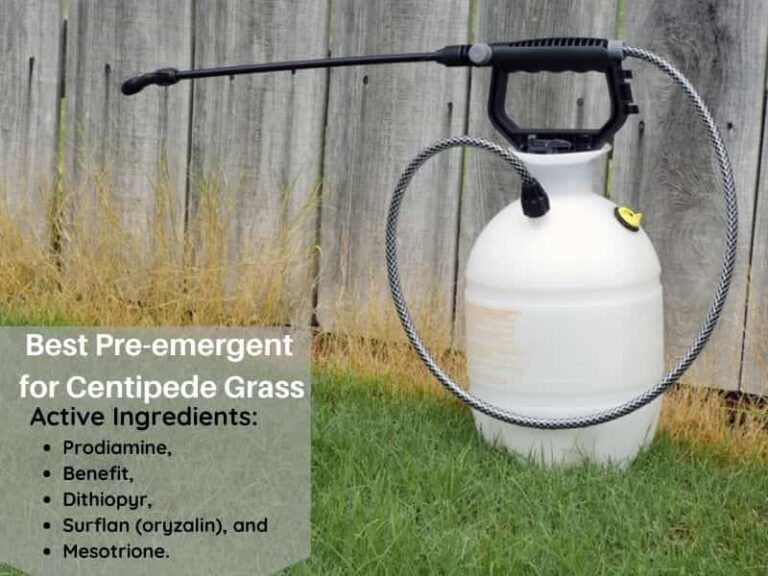How to Aerate Lawn By Hand
Grass thrives well in soils with enough water, oxygen, and nutrients. Aeration boosts the content of these basic requirements in the soil. At times, buying expensive machines may not be financially sensible, especially for small lawns. Handy tools can substitute in such a case since they are affordable and easily accessible, but how do you aerate by hand?
Manual aeration includes the use of gardening folks, shoe spikes, manual spikes, and core aerators. To effectively use them, prepare the ground, check the moisture content and wet the ground if necessary. Aerate the lawn with a suitable hand aerator. Reseed the bare spots and water generously for a couple of weeks.
What is Aeration?
Aeration is punching small holes in compacted soil using machines or handy tools to penetrate oxygen, water, and nutrients into the plant roots. When you aerate the lawn, more oxygen, water, and nutrients reach the roots, and they grow deeper into the soil. Deep roots help grass withstand environmental stresses like drought.
Loosening tight soil breaks thatch and keeps them less than ½ inch to allow more water and air filtration to the roots. Generally, the drainage of the soil improves. Uncompact soils enable microbes to break down more organic matter, which decomposes to release nutrients to the ground.
But should you aerate the lawn?
As you drive, walk, and your kids or pets play on the lawn, the soil compacts over time. When the ground is compact, there is no proper circulation of oxygen and Carbon IV Oxide gases between the soil and the atmosphere. Accumulating harmful Carbon IV oxide gas in the soil slows down the active growth of roots. Additionally, when grass grows thicker, it further tightens the soil. If you always leave grass clippings while mowing, thatch can build up. This will prevent oxygen, water, and nutrients from passing to the roots, thus endangering the healthy development of grass.
Pooling of water after rains or irrigation is common in lawns with compact soils. Lawns with heavy clay soils compact quickly and need more frequent aeration than those with sandy soils. Compact clay ends up having soggy lawns, and If the area is sloppy, the water will run off. Aerate such lawns once yearly in the growing season. Meanwhile, lawns used often experience heavy foot traffic. Their soil tightens quickly and should be aerated once per year. However, lawns with sandy soils take longer before they tighten. Aerate such lawns after every two to three years.
Besides regular lawn watering, fertilizing, and mowing, aeration is a vital yard maintenance practice that ensures grass grows healthy. If you overseed the lawn and topdress while aerating, be sure to get the lushest, healthiest lawn in the neighborhood.
What is the best time to aerate lawn?
The best time to aerate cool-season grasses, for example, Kentucky bluegrass is in fall, but late spring or early summer for warm-season turfs like Bermuda. The grass is actively growing during this time and would respond quickly by utilizing the more supplied oxygen, water, and nutrients to grow thicker and healthier. Also, if you aerate the lawn just before it enters the active growth window, it will grow healthier. Aerating lawns when the grass is dormant is not advisable.
How to aerate lawn by hand
Depending on the size and how often to aerate your lawn, the most practical way may be a manual method. Although it might be tedious and time-consuming, it’s just as effective as aerating by machines. Hand aerating is more convenient when used on small lawns.
You want to ensure you loosen the soil correctly at the right time for the grassroots to intake the more needed oxygen, water, and nutrients to grow deeper and healthier.
1. Prepare the lawn
To aerate the lawn efficiently, you must prepare it by clearing unnecessary materials. Remove debris, dead leaves, and litter lying on the lawn area. If there was thatch buildup, you could dethatch your lawn.
You can know your grass has thatch by stepping on it. If it feels spongy, there’s accumulated thatch on it. Another way to check thatch build-up is to dig a section of the grass to 6 inches deep and check for a dead grass layer longer than ½ inch. Rake it off. Mow the lawn a day before aeration. Be sure to mark sprinkler spots in the lawn, so you don’t hit them while aerating.
2. Check the moisture level of the soil
It’s best to aerate the lawn when the soil is wet but not dry to avoid damaging it. Damp soil makes the spikes of the aerator cut through the ground effortlessly. However, over-moist soils are muddy, thus inconvenient to work on, and can destroy the lawn.
Loosening dry soil will not be as effective as it should be because it hinders spike penetration. It’s also not advisable to aerate a frozen lawn because of problems related to over-wet grounds. Checking the moisture content of the soil ensures the right amount of water in the ground before aeration.
To confirm if the soil is wet or dry, insert a 6 inches long screwdriver into the lawn ground. It is wet enough if the screw feels easier to penetrate the soil and comes out with some soil sticking on its side. In that case, don’t irrigate the lawn. But the ground is overly moist if the driver is more muddy and dirty. Don’t water it. Wait for two to three days to recheck the moisture before aerating.
But If the driver feels stiff and more challenging to penetrate, the soil is dry. Turn on your sprinklers and water the lawn to 1 inch before aerating.
3. Aerate the lawn
Handy tools you could use for this activity are a hand-core aerator, a handspike aerator, or a garden fork. But, which is better, Spike vs. Plug Aerator?
To aerate your lawn, stand at a corner of your yard and move across the lawn in straight lines. Hold the core aerator with both hands and profoundly push it into the soil. Pull it out to remove plugs of soil. Skip about 4 to 6 inches, push it again to about four inches, and pull to remove soil plugs. Repeat the process throughout the lawn.
If your soil is more compact or gets heavy foot traffic, move a second time in a perpendicular direction from the one you started with.
Leave the soil plugs on the lawn, though they might be unsightly. The microbes in the plugs would break down organic matter and release more nutrients to the soil. You can rake them while leaving them on the lawn to make them less sightly and decompose quickly.
If using a spike aerator or a garden fork, move across the lawn in a straight line while sticking the tool into the soil. It will punch holes but leave no soil plugs.
4. Water the lawn
Turn on your sprinklers to irrigate the lawn with 1 inch of water. Water after 2 to 3 days to help it recover quickly after aerating.
Meanwhile, if you want to overseed the lawn after aerating, this is the best time to add seeds and lawn food. Continue watering regularly for the next few weeks to help the seeds germinate.
Ways of aerating lawn by hand
You could use a manual core aerator, a spike aerator, a garden fork, or aerator shoes to break down compact soil without hiring heavy machines.
1. Use a manual core aerator
This tool has hollow cylindrical spikes that dig and remove soil plugs when used on the lawn. It’s the most effective hand tool for aeration because it doesn’t compact the soil at the contact point. Plugs decompose and release nutrients back to the ground over time.
A manual core aerator has a handle and a foot bar, providing more leverage when breaking more compact areas. You only have to grip the tool with the handle, push it into the soil, and move a few inches ahead.
2. Use a manual spike aerator
Unlike a core aerator, a spike aerator has solid spikes that punch holes when pushed on the ground. The holes are about 2 inches deep. A manual spike aerator works best when aerating shallowly.
3. Use a garden fork
A garden fork operates similarly to a manual spike aerator. It punches shallow holes in the soil. It has sharp, thinner spikes that penetrate tight soils easily. A garden fork is simple to use but consumes more time and effort.
4. Use aerator shoes
These shoes have a layer of solid spikes attached at the bottom and straps at the top. The straps have buckles to fasten them tightly to your legs.
You should walk over the lawn while wearing shoes to aerate the lawn. As you move, the spikes below them punch holes in the yard. These shoes are more convenient if shallowly aerating a small area.
Overall, when aerating lawns by hand, use a manual core aerator instead of a spike aerator. This decision is because a manual core aerator does not compact the soil at the contact point, unlike a spike aerator.
References
- University of Maryland Extension: Lawn Aeration.
- UMass Extension: What is Thatch?
- University of Illinois: Benefits of fall core aeration to the lawn.




